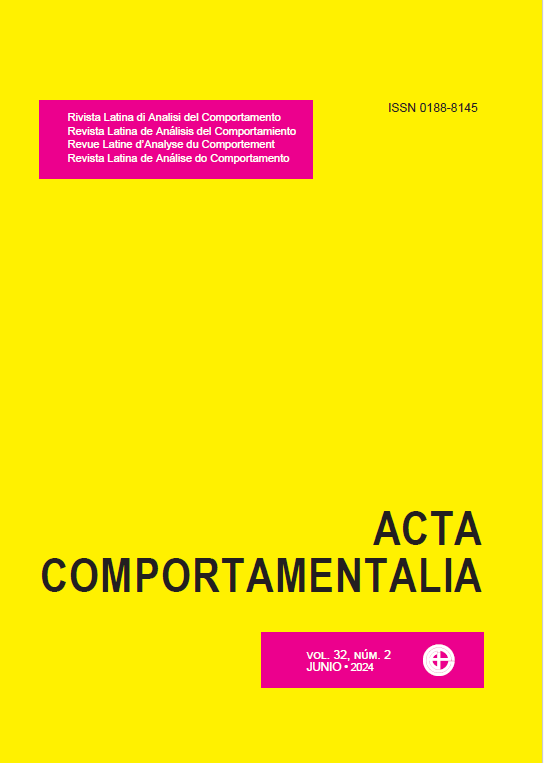Caregiver Training via Telehealth to Implement Incidental Teaching to Children with ASD
DOI:
https://doi.org/10.32870/ac.v32i2.88348Keywords:
caregiver training, Incidental Teaching, Autism Spectrum Disorder, Applied Behavior Analysis, telehealthAbstract
Given the growing prevalence of individuals diagnosed with ASD and the shortage of qualified professionals in the market to face this demand, training parents/caregivers has been one of the promising practices to help meet this need. Interventions for ASD based on the principles of Applied Behavior Analysis (ABA) have been shown to be effective in reducing behavioral excesses and promoting the learning of new repertoires. Among the various evidence-based intervention strategies are Naturalistic Teaching strategies. Among Naturalistic Teaching procedures, Incidental Teaching (IT) stands out for being a strategy that is guided by the child’s motivation. Recent studies have researched the effectiveness of training via telehealth (distance) to teach professionals how to use IT in intervention for children with ASD. However, to date, few studies have evaluated the use of telehealth to teach parents/caregivers of children with ASD to implement IT. Given this, the present study aimed to evaluate the effect of a training package comprising Instructional and Interactive Videomodeling (IIV), Self-monitoring with Checklist (SC) and Feedback, via telehealth, to teach caregivers of children diagnosed with ASD to implement the IT while teaching mand repertoire (making requests) and listening skills (following instructions). Eight adults and four children participated in the study. A multiple probe between participant design was used, controlling the insertion of the independent variable throughout the caregivers’ performance, and controlling the order of presentation of the package components to compare their effect on the participants’ performance. In component IIV, caregivers watched videos with instructions on how to implement the teaching programs “Mand with Sentence” and “Listen to Follow Instructions” and they were then asked to actually implement the teaching procedure they saw on the video. In the SC component, caregivers watched videos of their own implementation while filling out a checklist evaluating their own performance; then, they were also asked to apply the teaching procedures. During the Feedback component, after the experimenter evaluated the caregivers’ performance, she scored positive and negative aspects of the application of the procedures and evaluated the effects of this feedback on the application of the teaching programs. All caregivers, after the exposure to the training package, learned to apply the IT teaching programs. However, exposure only to components IIV or SC or a combination of those was not sufficient for the caregivers’ performance to reach the accuracy criterion (two consecutive sessions above 90%) established in the study. Therefore, it was necessary to use delayed and/or immediate feedback for all participants, with which the accuracy criterion was reached. Based on the results obtained, it can be concluded that training for caregivers through telehealth, using the package from the present study, plus feedback, is promising as an effective and less costly behavioral analytical intervention.
Downloads
Downloads
Published
How to Cite
Issue
Section
License

<a rel="license" href="http://creativecommons.org/licenses/by-nc-sa/4.0/"><img alt="Licencia de Creative Commons" style="border-width:0" src="https://i.creativecommons.org/l/by-nc-sa/4.0/88x31.png" /></a><br />Este obra está bajo una <a rel="license" href="http://creativecommons.org/licenses/by-nc-sa/4.0/">licencia de Creative Commons Reconocimiento-NoComercial-CompartirIgual 4.0 Internacional</a>.



